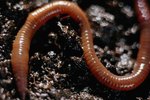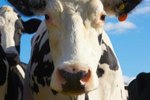
Giant kangaroo rots (Dipodomys ingens) are independent rodents that feature lengthy, sturdy back legs that they employ for leaping purposes. They reside exclusively in California, but only in selected regions, such as the San Joaquin Valley and Kettleman Hills. Despite their names, these talented jumpers don't have much in common with most rats.
About Giant Kangaroo Rats
Giant kangaroo rats usually tip the scales at around 5.5 ounces. These sizable kangaroo rats, at full maturity, are between approximately 12 and 14 inches long. This length range also takes their tails, which are roughly 7 inches long, into consideration. Their bodies are pale yellowish-brown in coloration, although their undersides are white. Giant kangaroo rats mostly reside in dry and grassy settings. Piedmont plains and scrubland are both common locales.
Natural Enemies of Giant Kangaroo Rats
It is not common for mammals to live close to giant kangaroo rats, and because of that, their most prominent threats are usually owls -- think great-horned and barn owls. Owls aren't their only predators, however. Other natural enemies of giant kangaroo rats include coachwhips, gopher snakes, rattlesnakes, king snakes, badgers, coyotes and kit foxes.
Not Easy Targets
Thankfully for giant kangaroo rats, and perhaps not so much for their predators, they aren't easy targets. Not only are these rodents champion jumpers, they are also swift movers. This combination makes getting to them a rather formidable task. Their tails are also handy for steering them into their desired directions.
Diet
Giant kangaroo rats have predators, but they don't usually behave as predators. Their diet is mostly meat-free, and includes components such as grains, plants and seeds. Although they aren't usually "natural enemies" of most creatures, they do occasionally dine on bugs. Food searching activities take place when it's dark outside.
Endangered Species
Giant kangaroo rats have natural enemies, and they also have some not-so-natural enemies. These rodents are classified as "endangered" creatures as of the IUCN Red List of Threatened Species' 2008 evaluation. Agricultural development -- and the resulting reduced habitat -- is a major culprit behind these mammals' falling populations.
References
- IUCN Red List of Threatened Species: Dipodomys ingens
- U.S. Fish & Wildlife Service: Giant Kangaroo Rat
- Bureau of Land Management California: Giant Kangaroo Rat
- PBS Nature: Giant Kangaroo Rat
- ARKive: Giant Kangaroo Rat
- University of Michigan Animal Diversity Web: Dipodomys ingens
- California State University Stanislaus Endangered Species Recovery Program: Giant Kangaroo Rat
- Sacramento Fish & Wildlife Office: Giant Kangaroo Rat
Photo Credits
-
Jupiterimages/Comstock/Getty Images



